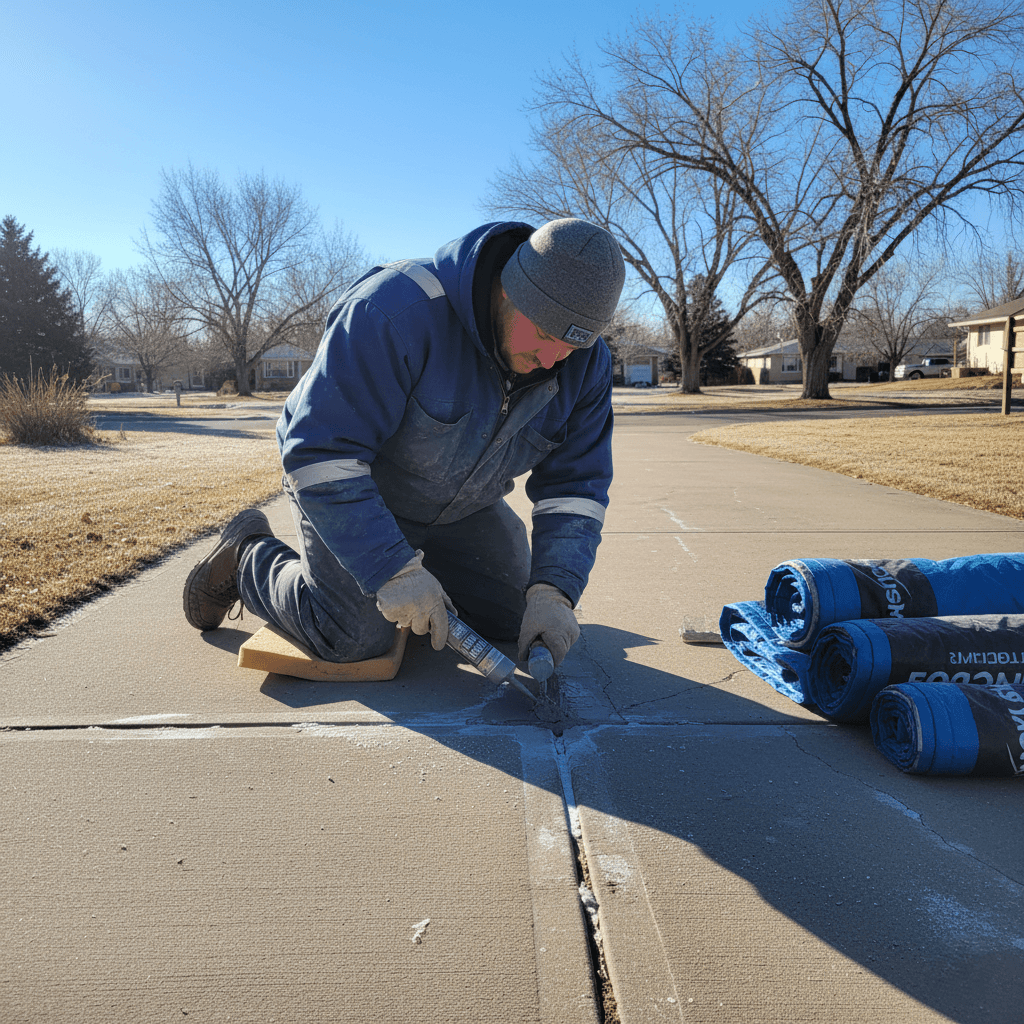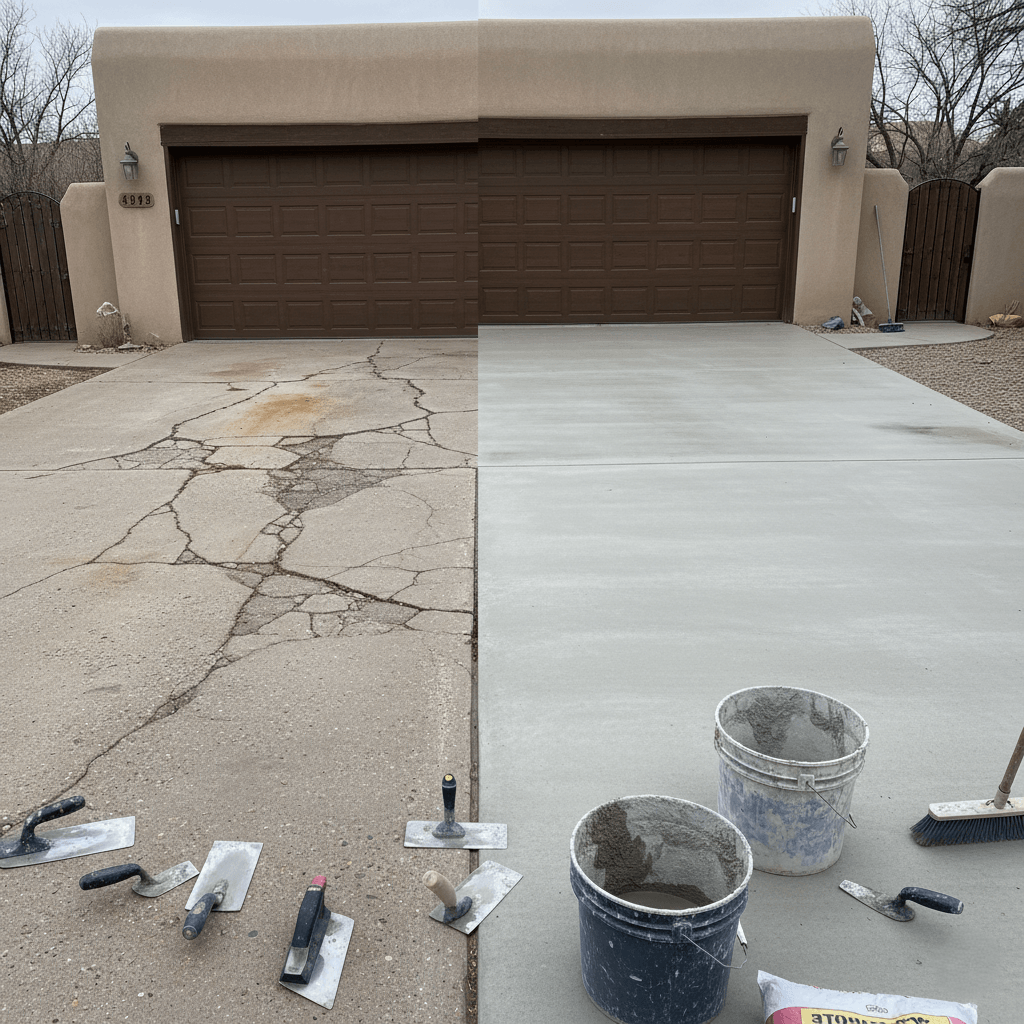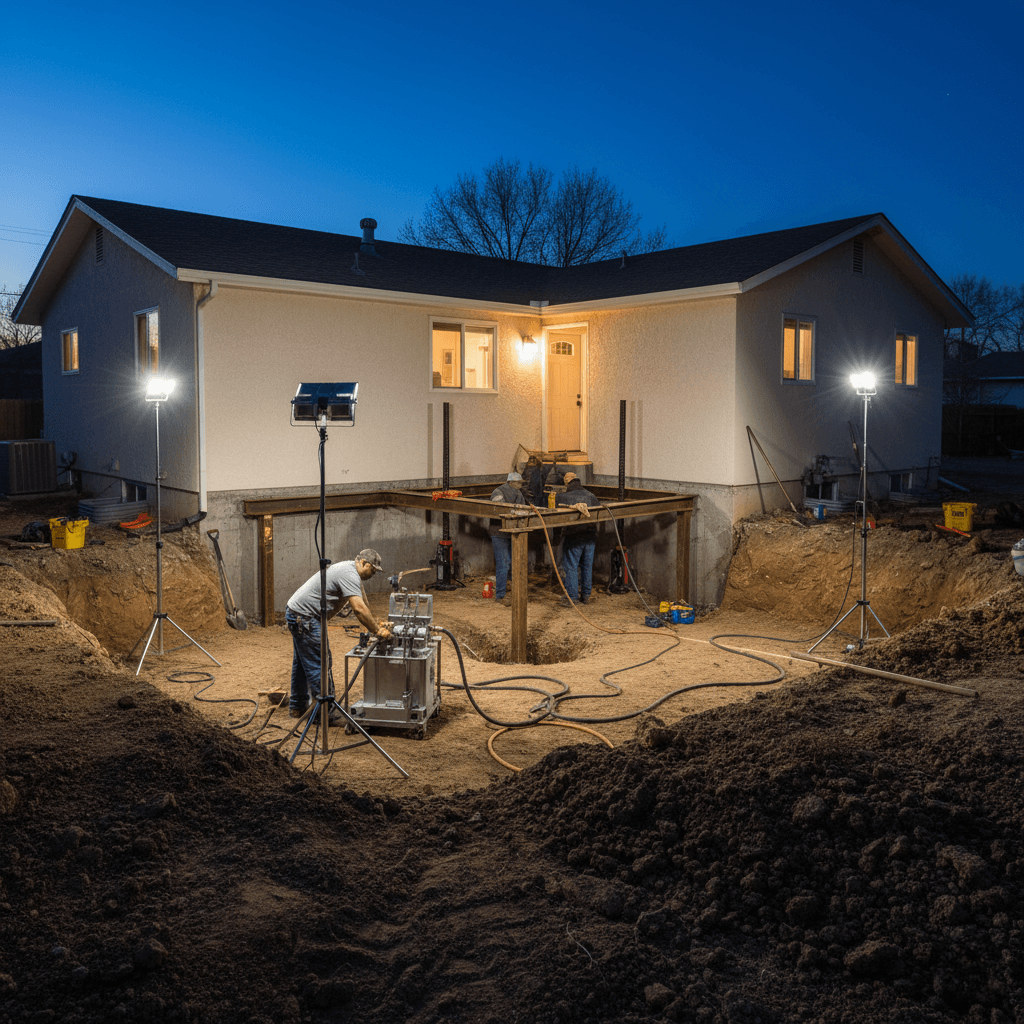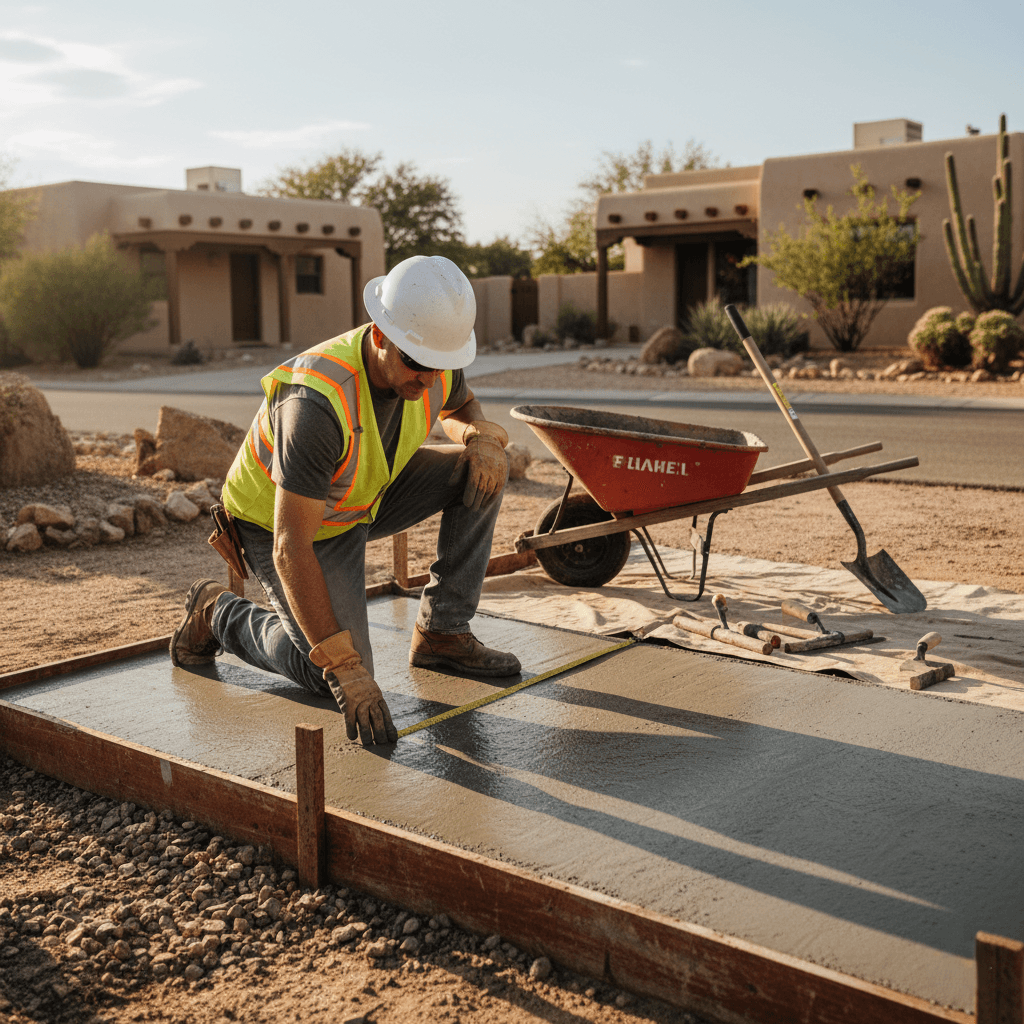
When to Consider Concrete Resurfacing vs Replacement in Pueblo
Concrete Resurfacing Pueblo
Deciding between concrete resurfacing and complete replacement represents a critical choice for Pueblo homeowners facing deteriorating driveways, patios, or walkways. The right decision depends on damage severity, budget constraints, and long-term property goals. Understanding the differences between these repair methods helps you invest wisely in your outdoor surfaces. Pueblo’s unique climate conditions influence how concrete ages and which restoration approach works best. Making an informed choice prevents wasted money on temporary fixes or unnecessary full replacements.

Understanding Concrete Resurfacing
Concrete resurfacing involves applying a thin overlay of specialized cement-based material over existing concrete surfaces. This process typically uses a layer ranging from one-eighth to one-quarter inch thick. The overlay bonds to the existing concrete, creating a fresh surface that hides minor imperfections. Resurfacing products contain bonding agents that help them adhere to aged concrete properly.
The technique works well for surfaces showing cosmetic wear but maintaining structural integrity. Surface discoloration, minor cracking, light scaling, and shallow spalling respond excellently to resurfacing treatments. Properties throughout Pueblo, from Aberdeen to Mesa Junction, benefit from this cost-effective restoration method. The overlay can be textured, colored, or stamped to create decorative finishes that enhance appearance significantly. However, resurfacing cannot fix underlying structural problems or severely damaged concrete.
When Concrete Resurfacing Makes Sense
Surface-Level Damage Only
Resurfacing proves ideal when damage remains confined to the concrete surface without affecting structural integrity. Hairline cracks smaller than one-quarter inch wide qualify as surface issues. Minor chipping along edges or slight spalling caused by age represents another suitable scenario. Discoloration from stains, weather exposure, or aging responds well to resurfacing treatments.
The existing slab must remain fundamentally sound for resurfacing to succeed. Test this by tapping the surface with a hammer to check for hollow sounds indicating delamination. Solid concrete produces a clear, sharp sound throughout the entire surface. Properties in neighborhoods like Belmont or University Park often have structurally sound concrete needing only cosmetic renewal. If the base remains stable and level, resurfacing provides an excellent solution at a fraction of replacement costs.
Budget Constraints
Concrete resurfacing costs significantly less than complete replacement, making it attractive for budget-conscious homeowners. In Pueblo, resurfacing typically runs $3 to $7 per square foot, while replacement costs $8 to $15 per square foot. A 500-square-foot driveway would cost $1,500 to $3,500 for resurfacing compared to $4,000 to $7,500 for replacement.
The savings allow homeowners to address concrete issues without draining savings accounts. However, the lower initial cost must be balanced against longevity expectations. Properly applied resurfacing extends concrete life by 10 to 15 years under ideal conditions. Properties requiring temporary improvements while planning for eventual replacement find resurfacing particularly valuable. The investment buys time to save for a complete replacement when necessary.
Quick Turnaround Needed
Resurfacing projects complete much faster than full replacements. Most residential applications finish within one to three days, depending on size and complexity. The existing concrete provides the structural base, eliminating excavation and demolition time. Curing takes 24 to 48 hours before light foot traffic, with full curing within a week.
Replacement projects require five to seven days minimum, including demolition, hauling, base preparation, and concrete curing. The 28-day curing period before heavy use adds further delays. Properties needing immediate repairs to address safety hazards benefit from resurfacing’s speed. Homeowners preparing homes for sale appreciate the quick transformation. Areas throughout Pueblo, like Eagleridge and Skyview, will see resurfacing used when timeline pressures exist.
Signs You Need Complete Replacement
Structural Damage and Deep Cracks
Large cracks wider than one-quarter inch indicate structural problems that resurfacing cannot fix. These cracks often result from foundation settling, soil movement, or inadequate base preparation during original installation. Multiple intersecting cracks creating a spider-web pattern suggest serious structural failure. Deep cracks extending through the entire slab thickness require replacement.
Significant settling or heaving creates uneven surfaces that resurfacing cannot correct. If sections of concrete sit several inches higher or lower than adjacent areas, the base has failed. Tree roots lifting concrete slabs cause damage too severe for surface treatments. Properties in areas like Country Club or Heritage with mature landscaping sometimes experience root-related damage. Attempting to resurface structurally compromised concrete wastes money on a temporary fix.
Extensive Spalling and Crumbling
Severe spalling, where large chunks of concrete surface peel away, indicates deterioration too advanced for resurfacing. This damage typically results from freeze-thaw cycles combined with inadequate air-entrainment in the original mix. Pueblo’s climate causes this problem in older concrete lacking proper freeze-thaw protection. When spalling extends deeper than one inch, resurfacing products cannot bond adequately.
Crumbling edges or corners reveal concrete breakdown at the molecular level. This deterioration often stems from chemical damage, severe weathering, or extremely aged concrete. If you can easily break off chunks with a hammer, the concrete has lost structural integrity. Exposed rebar or wire mesh visible through the surface confirms severe deterioration. Replacement becomes necessary when concrete reaches this advanced state of decay.
Repeated Previous Repairs
Concrete requiring multiple repair attempts over the years suggests underlying problems that persist. If previous resurfacing has failed within a few years, the base has issues preventing proper bonding. Continuous cracking despite repeated patching indicates foundation or soil problems. Properties throughout Pueblo with histories of concrete problems should consider replacement.
Examining repair history helps predict future performance. When repair costs accumulate to 50 percent or more of replacement costs, starting fresh makes financial sense. The new installation allows proper base preparation and modern concrete mixes resistant to local conditions. We help homeowners evaluate whether ongoing repairs justify the expense or replacement provides better long-term value.
Age of Existing Concrete
Concrete age significantly influences the resurfacing versus replacement decision. Most residential concrete lasts 25 to 40 years before requiring replacement. Driveways and patios approaching this age range benefit more from replacement than resurfacing. Older concrete experiences reduced bonding capacity, making resurfacing less reliable.
Concrete installed before modern building codes may lack adequate reinforcement or proper mix design. Pueblo’s older neighborhoods, like Mesa Junction and Northside, contain concrete from various decades with varying quality. Concrete from the 1960s and 1970s often lacks air-entrainment, making it vulnerable to freeze-thaw damage. If your concrete is more than 20 years old and shows significant wear, replacement typically provides better long-term results than resurfacing.
Climate Factors in Pueblo
Freeze-Thaw Cycle Considerations
Pueblo experiences approximately 100 freeze-thaw cycles annually, creating harsh conditions for concrete surfaces. Resurfaced concrete must withstand the same environmental stresses as the original slab. If existing concrete shows freeze-thaw damage like scaling or spalling, the underlying slab likely lacks proper air-entrainment. Resurfacing over non-air-entrained concrete provides only a temporary improvement.
Modern resurfacing products include freeze-thaw protection, but they rely on the base concrete remaining stable. Water penetrating through the overlay into the old concrete causes problems during freezing. The expansion and contraction cycles eventually separate the overlay from the base. Properties considering resurfacing must evaluate whether the existing concrete can support the overlay through Pueblo’s climate challenges.
Moisture and Drainage Issues
Poor drainage accelerates concrete deterioration regardless of surface treatment. Standing water, soil moisture, and inadequate slope create conditions that undermine both resurfacing and existing concrete. If drainage problems contributed to the original concrete failure, resurfacing alone cannot solve the issue. Replacement allows proper grading and drainage corrections.
Clay soil, common throughout Pueblo, retains moisture and expands when wet, creating pressure beneath concrete slabs. This pressure causes heaving, cracking, and eventual failure. Properties with drainage issues must address these problems before either resurfacing or replacement. We evaluate drainage patterns and recommend solutions that protect your investment regardless of which restoration method you choose.
Cost Comparison Analysis
Initial Investment Differences
The upfront cost advantage of resurfacing proves substantial compared to replacement. Resurfacing a typical 400-square-foot patio costs $1,200 to $2,800, while replacement runs $3,200 to $6,000 for the same area. The savings come from eliminating demolition, hauling, and disposal costs. Labor requirements decrease significantly when the existing slab serves as the base.
Material costs for resurfacing remain lower than those for concrete replacement. Resurfacing products cost $50 to $100 per bag, covering approximately 40 square feet. New concrete delivery charges $125 to $150 per cubic yard plus labor for installation. Properties throughout Pueblo appreciate these savings when concrete damage remains superficial. However, initial cost represents only part of the financial equation.
Long-Term Value Assessment
Replacement typically lasts 25 to 40 years, while resurfacing extends concrete life by 10 to 15 years. Calculating cost per year of service reveals the true value proposition. Replacement costing $5,000 lasting 30 years equals $167 annually. Resurfacing costing $2,000 lasting 12 years equals $167 annually as well. The comparable annual costs make either option viable depending on circumstances.
Property plans influence the decision significantly. Homeowners intending to sell within five years might choose resurfacing for immediate curb appeal without the full replacement investment. Those planning long-term ownership benefit more from the replacement’s extended lifespan. Areas like West Park and Sunset see both approaches used depending on the homeowner’s situation. We help you calculate which option provides better value for your specific timeline and goals.
Preparation Requirements
Surface Preparation for Resurfacing
Successful resurfacing demands meticulous surface preparation to ensure proper bonding. The existing concrete must be thoroughly cleaned, removing all dirt, oil, grease, and loose material. Pressure washing at 3,000 PSI minimum opens concrete pores for bonding. Chemical cleaners eliminate stubborn stains that prevent adhesion.
Crack repair precedes resurfacing application, with all cracks wider than hairline filled using appropriate materials. The surface should be dampened but not saturated before applying the overlay. The temperature during application should stay between 50 and 90 degrees Fahrenheit for optimal bonding. Proper preparation determines whether resurfacing succeeds or fails prematurely. Properties throughout Pueblo require this careful preparation regardless of location or concrete age.
Site Work for Replacement
Complete replacement involves extensive site preparation that resurfacing avoids. Demolishing existing concrete creates noise, dust, and debris requiring disposal. Breaking up concrete with jackhammers or heavy equipment takes considerable time. Hauling away debris costs $200 to $500, depending on quantity and disposal fees.
Base preparation includes grading, compacting, and adding gravel layers, creating proper drainage. This work corrects problems that caused the original concrete failure. Forms must be constructed to contain new concrete during pouring. Reinforcement installation with wire mesh or rebar strengthens the new slab. While more involved than resurfacing, replacement addresses underlying issues comprehensively.
Aesthetic Considerations
Both resurfacing and replacement offer decorative finish options that enhance the property’s appearance. Resurfacing overlays can be colored, textured, or stamped to create attractive surfaces. The thin overlay limits texture depth compared to stamped concrete poured during replacement. However, the visual results often prove indistinguishable to casual observers.
Replacement allows complete design freedom since you start with a blank slate. Pattern options, thickness variations, and complex designs work better with new concrete. Properties wanting significant aesthetic changes benefit from the replacement’s flexibility. Resurfacing works better when maintaining the existing layout while improving appearance. Neighborhoods throughout Pueblo showcase both approaches, creating beautiful outdoor spaces.
Professional Assessment Importance
Determining whether to resurface or replace requires expert evaluation of concrete condition. Professional inspections identify problems invisible to untrained eyes. Core samples reveal internal deterioration not evident on the surface. Testing equipment measures concrete strength and identifies structural weaknesses.
We examine drainage patterns, foundation stability, and soil conditions affecting concrete performance. Experience working in Pueblo’s climate provides insights into how local conditions impact different repair approaches. An honest assessment prevents choosing the wrong solution that wastes money. Properties in Aberdeen, Belmont, or anywhere throughout Pueblo benefit from professional evaluation before making this significant decision.
DIY Versus Professional Installation
Resurfacing products marketed for DIY application tempt budget-conscious homeowners. However, proper surface preparation and application technique prove critical for success. Mistakes during application create bonding failures that cause premature overlay separation. Temperature control, mixing ratios, and application timing require experience and knowledge.
Professional installation costs more initially but provides warranty protection and proven results. Contractors possess specialized tools and techniques ensuring proper application. The labor warranty protects your investment if problems develop. Replacement projects exceed DIY capabilities for most homeowners due to the heavy equipment and expertise required. We recommend professional installation for both resurfacing and replacement to ensure optimal results.
Maintenance After Restoration
Both resurfaced and replaced concrete require ongoing maintenance for maximum longevity. Regular cleaning prevents stain buildup and keeps surfaces attractive. Sealing protects against moisture penetration and surface wear. Resurfaced concrete typically needs resealing every two to three years. Newly replaced concrete should be sealed within the first year and resealed on a similar schedule.
Addressing small cracks promptly prevents them from expanding into major problems. Winter maintenance, avoiding deicing salts, protects both surface types from chemical damage. Properties throughout Pueblo extending concrete life through consistent maintenance maximize their restoration investment. We provide maintenance recommendations specific to your surface type and usage patterns.
Making Your Decision
Choosing between concrete resurfacing and full replacement depends on multiple factors specific to your situation. Surface-only damage with a structurally sound base favors resurfacing. Deep cracks, settling, extensive spalling, or age-related deterioration necessitate replacement. Budget availability, timeline requirements, and property plans influence the decision significantly.
Climate considerations prove especially important in Pueblo’s freeze-thaw environment. Concrete lacking proper protection requires replacement rather than resurfacing. Drainage issues must be corrected regardless of which approach you choose. At Pueblo Concrete Services, we provide thorough evaluations, helping you understand your concrete’s condition and which restoration method delivers the best value, ensuring your investment improves your property for years while meeting both your immediate needs and long-term goals.


